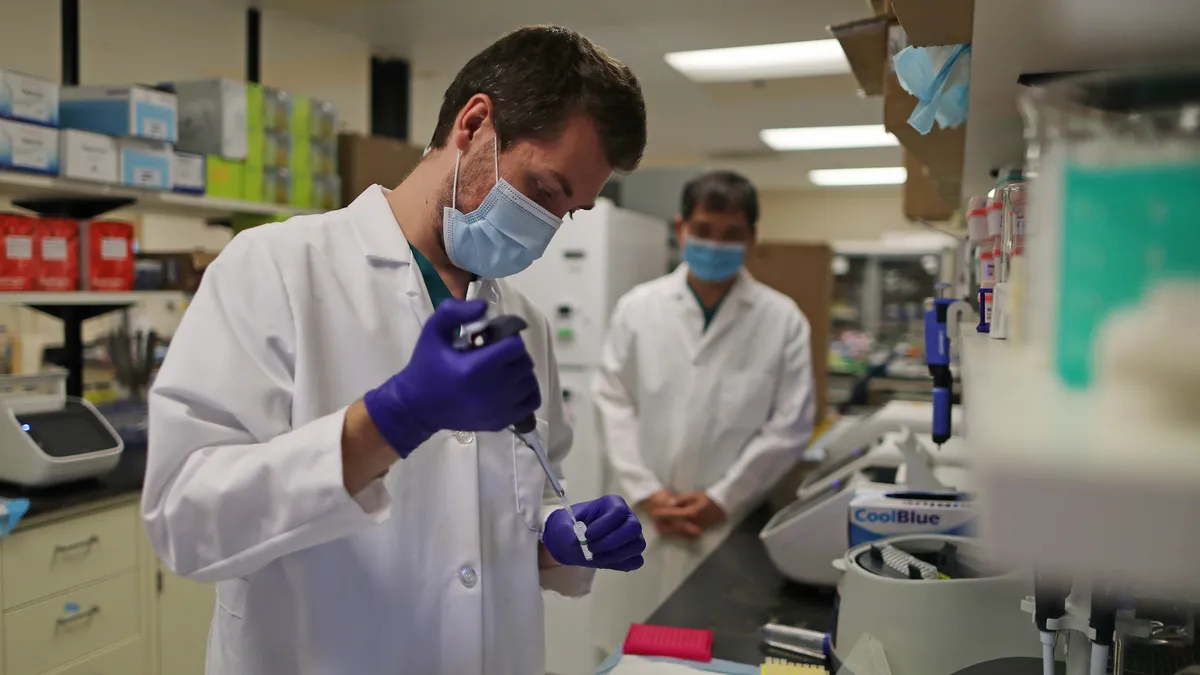Hologic, Thermo Fisher Scientific and Qiagen reported quarterly financial results this week, revealing how rising demand for core diagnostics has offset better-than-feared falls in COVID-19 test sales. Here, we look at the key takeaways from each set of results.
Hologic
- Continued demand for COVID-19 tests helped Hologic to report revenue of $1 billion in its third quarter, despite the semiconductor shortage affecting its breast health business.
- While COVID-19 assay sales fell year on year, at $172.9 million they held up better than feared. With the rest of the diagnostics unit growing 15% on a constant currency basis, the additional COVID-19 revenues were enough to push sales above $1 billion.
- The growth partly offset a 22.9% fall in breast imaging sales. Hologic attributed the decline to the continuing chip supply problems that the company expects to improve slowly in the coming quarters.
Since COVID-19 turbocharged sales, Hologic and its peers have faced questions about whether they can use pandemic-related sales as a launchpad for continued growth as the crisis eases.
“With COVID testing significantly down sequentially, our third quarter provided an opportunity for customers to validate and run more non-COVID assays on their Panther systems. As a result, our diagnostic business grew 15% excluding COVID year-over-year worldwide, a truly phenomenal result and one that demonstrates the impact of women returning to their wellness exams and procedures,” Hologic CEO Steve MacMillan said in an earnings call.
Thermo Fisher Scientific
- Thermo Fisher Scientific reported second quarter revenue of $10.97 billion as growing demand for immunodiagnostics and microbiology partly offset falling COVID-19 testing sales.
- As happened at Hologic, COVID-19 testing performed better than expected but still declined versus the prior year, causing revenue at the specialty diagnostics business to fall 11% on a reported basis.
- China was a bright spot for the COVID-19 diagnostic business, with Thermo Fisher’s support for local testing helping it to grow sales in the country by 20% in the second quarter.
Thermo Fisher flagged China as a possible headwind going into the second quarter, reflecting the potential for lockdowns to hurt its business. However, China’s zero-COVID policies also benefited parts of the business, as Thermo Fisher CEO Marc Casper told investors on the quarterly results conference call.
“A nice chunk of the overdrive in COVID testing was in supporting the local activities. We don’t sell our assays there, but we do sell our instruments and our reagents to support local demand. So, we had strong core growth and a meaningful response in China, actually larger than we typically have in China for COVID testing. The way I think about the outlook is, it should be a good market in the second half of the year. I have no doubt there will be some level of COVID disruption,” Casper said.
Qiagen
- Qiagen reported second quarter revenue of $516 million, down 4% on a constant currency basis, as double-digit growth in the core business offset falling COVID-19 testing sales.
- In line with the broader industry, Qiagen’s COVID-19 testing revenue declined, in its case by 39% on a constant currency basis, but performed better than expected. The core business grew 10%.
- Qiagen responded to the results by raising its full-year sales outlook to at least $2.2 billion, a target that factors in its latest thinking on the current inflation and macroeconomic trends.
Qiagen’s presence in Germany, a country reliant on Russian gas, makes it potentially vulnerable to the energy crisis that could hit the European Union this year and has already led politicians to agree to cut gas demand by 15%. However, the company began implementing an alternative energy system at its site in the country late last year, CFO Roland Sackers told investors.
“We are taking actions to mitigate the impact in terms of our supply chains and energy needs. On that point, our natural gas needs in Germany are going to be covered by another energy source as of August. And while natural gas is used to heat our buildings, we don't need it for production,” Sackers said on a conference call to discuss the quarterly results.













